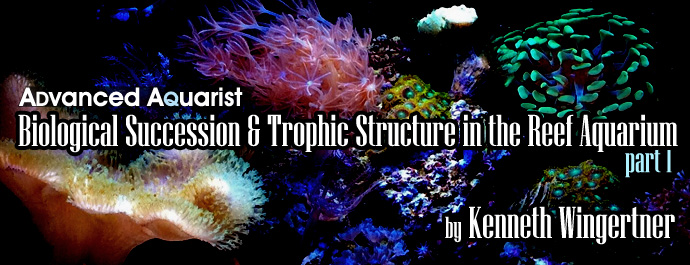
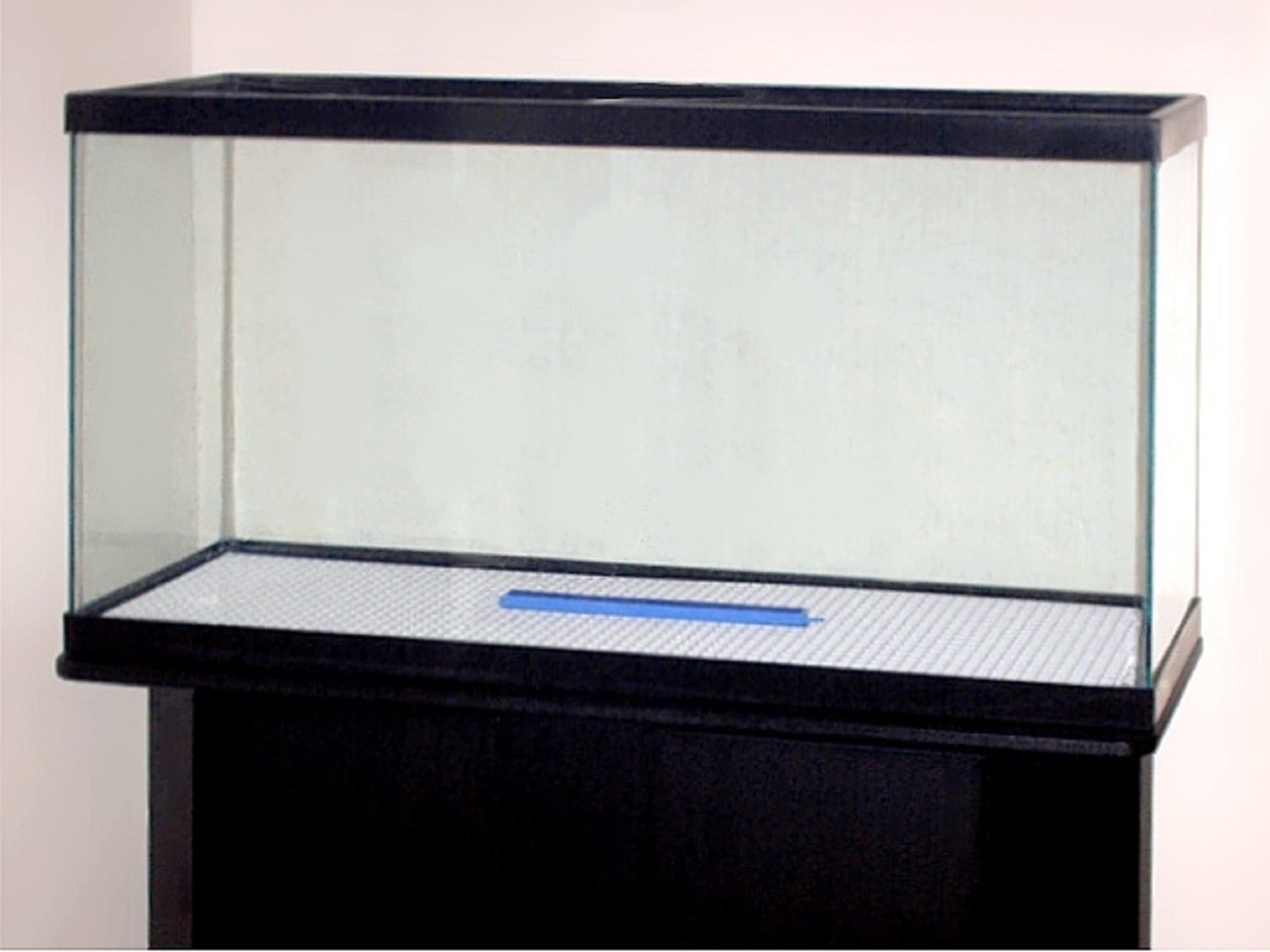
Setting up a new aquarium could, and should, be seen as kickstarting a fresh habitat. Photo by Andrzej 22.
Let’s face it: marine aquaria are eternal works in progress. However large, well-equipped and expertly maintained they may be, they are always capable of throwing new challenges at their keepers. Some of these challenges keep us on our toes and provide opportunities to learn new things; others can be a never-ending drag. Some of the most common, and indeed aggravating, challenges seem to stem from mistakes made early in the system’s set-up. At the top of this list is undesirable algal growth, which results from excessive nutrient concentration, which often times results from adding too many higher animals (e.g. fish!), particularly during initial stocking.
The simple fact is, marine aquarists (especially newbies) are disproportionately attracted to fish. They very much want the “movement” in their display. They find so many fishes’ “personalities” irresistible. They might also be operating under the pretext that fish are “easy” and that corals are “hard,” and that the system should therefore be stocked firstly with the former and ultimately with the latter. For those hoping to establish, eventually, a naturalistic reef environment brimming with vibrant stony corals and other sessile invertebrates, this mindset can lead to many troubles.
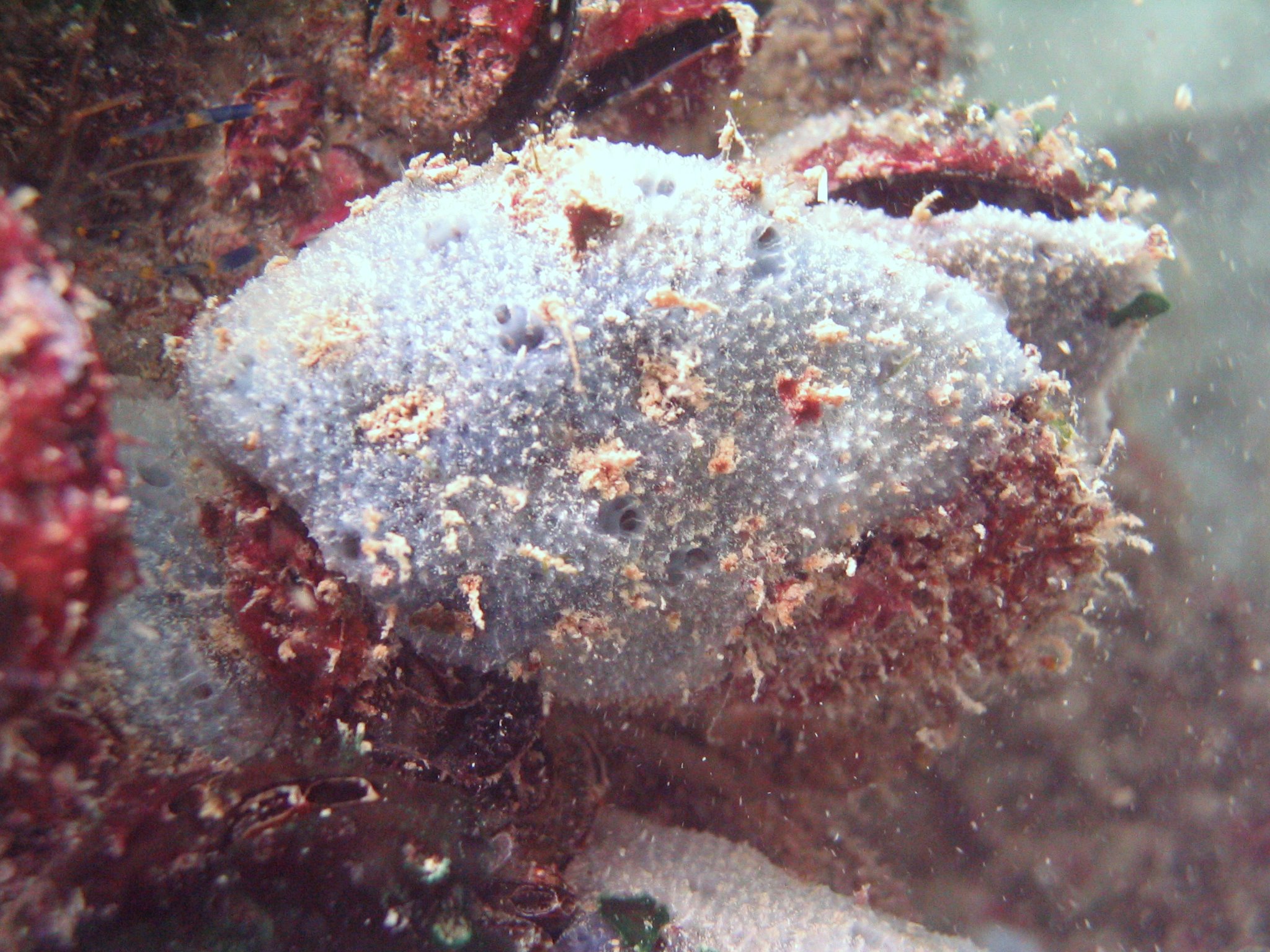
If allowed to establish themselves and flourish, sponges can play a major role in nutrient cycling by consuming bacterioplankton, phytoplankton and particulate organic matter. Photo by Florin DUMITRESCU.
Lessons (barely) learned
Entry-level reef aquarists might respond with amusement (and perhaps a little horror) upon hearing how “fish enthusiasts” were instructed to set up their tanks in the early days of the hobby. In light of what we know today, it is difficult to deny that the conventional means of conditioning a tank in yesteryears were anything but crude and, as we shall see, rather backwards.
In many cases, at least up to the mid-1980s, a handful of substrate from an “established” system was mixed into the clean, shiny white crushed coral over an undergravel filter (okay, perhaps a few of us had begun experimenting with the newfangled wet/dry method by that time). Then, in a wholly determined attempt to add ammonia, some dead organic matter (maybe frozen krill) was tossed in the tank to rot. During the following days or weeks, we would note with great satisfaction the nitrate spikes that occurred as the “filter” (a real nutrient factory, to be sure) became populated with so-called good bacteria. Some would even claim as a success the resulting blooms of benthic algae that would coat the gravel, bleached coral skeleton décor, tank panels-everything. When the system was perfectly and naturally balanced [sic], the good folks at the local fish shop would provide us with a cheap, hardy “guinea pig” fish such as a damselfish or even a molly; we were then given the big thumbs-up if our test subject survived, say, its first week in the new system.
That is typically when things really got ugly. At this point, the emboldened aquarist (who by now had patiently waited something like two or three whole weeks to start stocking) would be completely bubbling over in his or her excitement to begin filling the tank with fish. Generally, the good folks at the shop would be equally happy to sell them. The customer was usually given a bioload budget of x inches of fish per gallon to work with. Guided by this ridiculously arbitrary (if not nonsensical) prescription, the aquarist would go about selecting “a red one, a blue one, a yellow one” and so on, oftentimes exhausting the whole of the budget at once. And the usual result? A week or two after bringing too many fish home, all at once, and then chronically overfeeding them, ammonia would return with a vengeance. The whole endeavor would crash to a sudden, disastrous halt. And “crash” is almost always how we described it, then as now.
Gradually, significant innovations were made. While a detailed history of reef aquarium keeping is beyond the scope of this discussion, it is certainly worth noting the impact that the increased availability of live sand and live rock had on the hobby. Much more than mere aquascaping materials, aquarists quickly recognized their value-no, indispensability-for creating a balanced and realistic simulation of reef environments. Central to this new idea was the much more effective microbial synergy (mainly between nitrifying and denitrifying bacteria) that could be promoted on and in these media. This undoubtedly was a breakthrough.
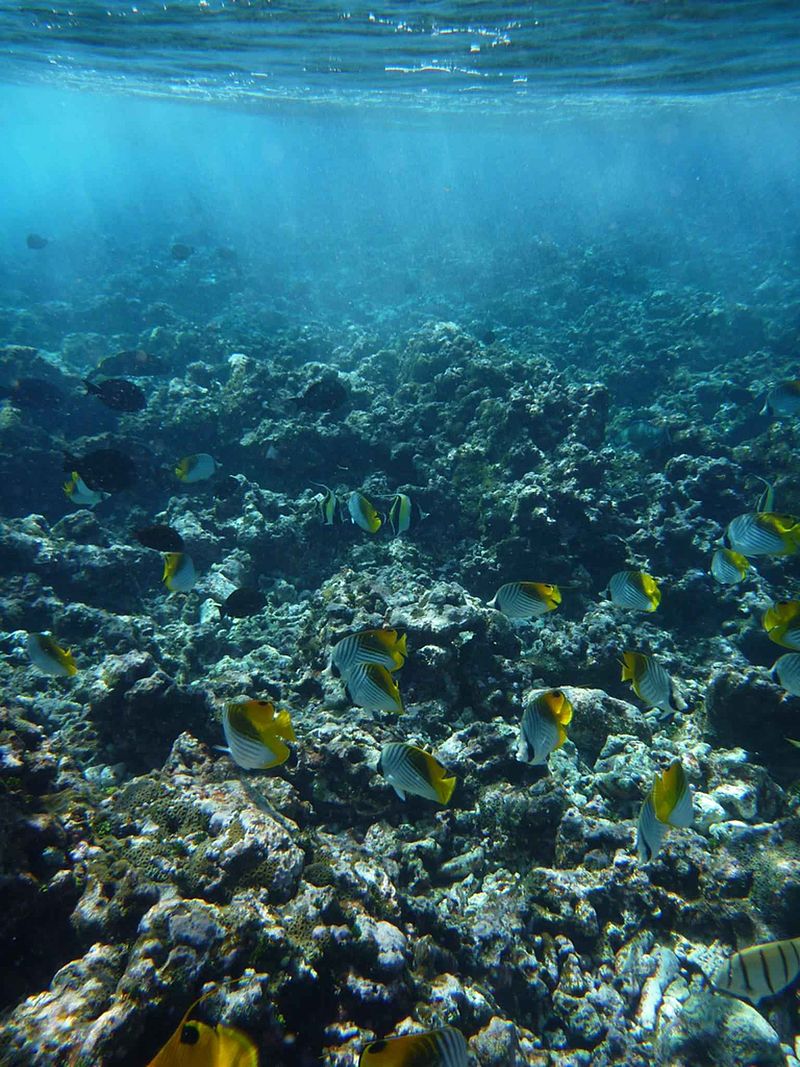
Frequently disturbed habitats exhibit modest biodiversity. Photo by Youngren Sarah, U.S. Fish and Wildlife Service.
Nevertheless, most of the fascinating little goodies that play a critical intermediary role in nutrient cycling (sponges, bryozoans, foraminifera, and so on) were unfortunately given far less attention. Consequently, they seldom survived for long after harvest. Some of this loss could be attributed to poor handling, improper packing and unnecessarily long transport times. Some collectors even scrubbed these organisms from the live rock under the defeatist notion that they were “just going to die anyway.” Poor water quality and weak water movement frequently stressed those few sessile “hitchhikers” that did make it into an aquarium system alive. Still, the greatest threat to their existence was overgrowth by nuisance algae.
Yes, pastures of hair algae were still pretty commonplace well into the 1990s. The reason for this is simple: yet too many fish. Way too many. Maybe there was a condy anemone or a smattering of green mushroom anemones in there somewhere, but these were essentially fish-only-with-live-rock (FOWLR) systems-though they had yet to earn that ever-abasing designation. Fish only, but way, way too many.
By the time these pisciphiles had come around to corals, their tanks were not only crammed with fish but also had huge, improperly managed nutrient pools. So, shortly after installing that fancy new light to accommodate their first coral acquisition, their tank (which had been so “stable” for so long) became blanketed with unsightly algal turfs. These blooms claimed most of the small invertebrate life on any fresh live rock that was added and similarly encroached upon and eventually killed many corals. A host of specialized chemicals and high-tech gadgets would be deployed to stave off the plague. That perennial conflict, man-versus-algae, had begun.
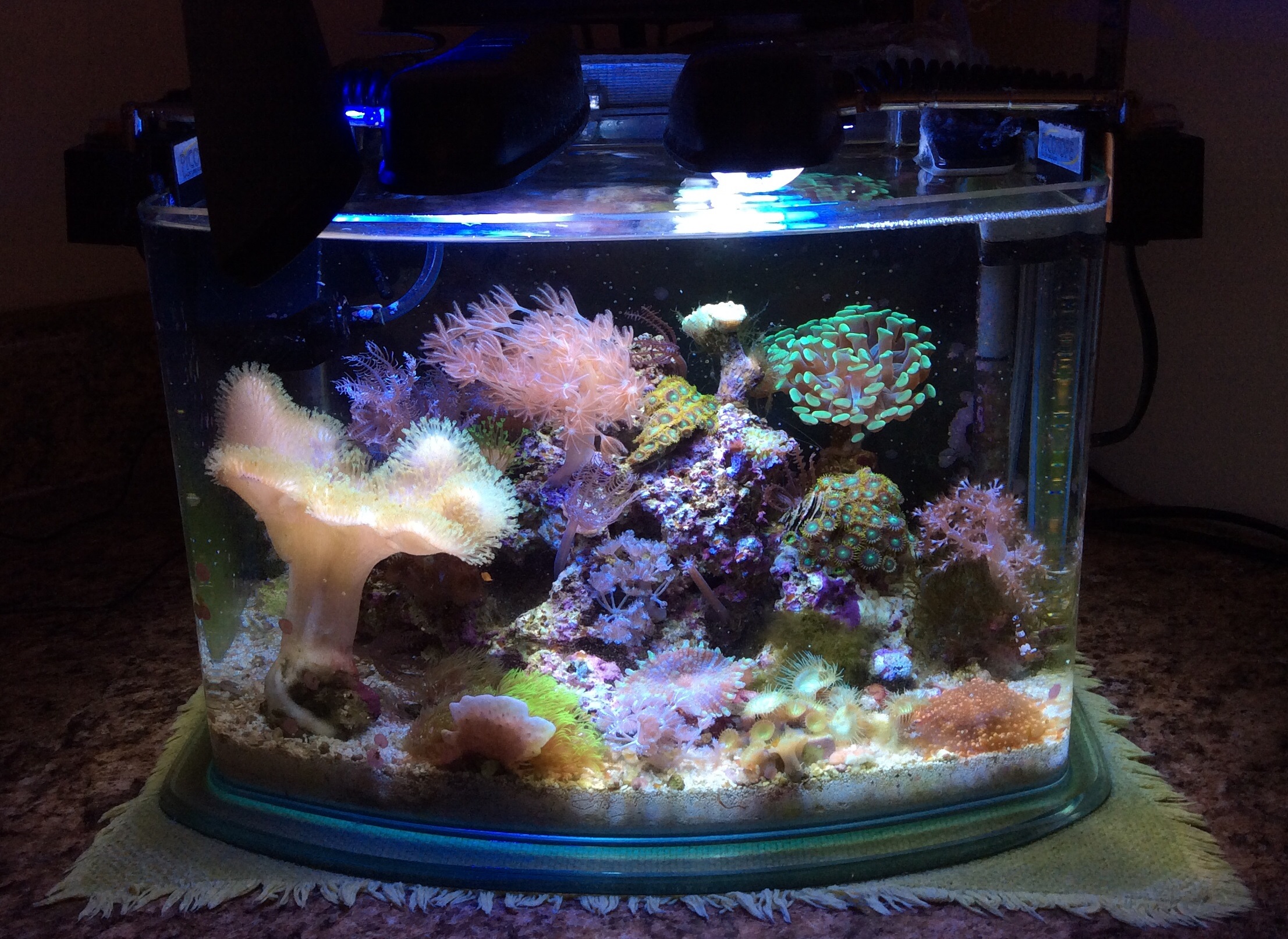
Controlling nuisance algae tends to become increasingly difficult with decreasing tank volume. Photo by Martin Guerre.
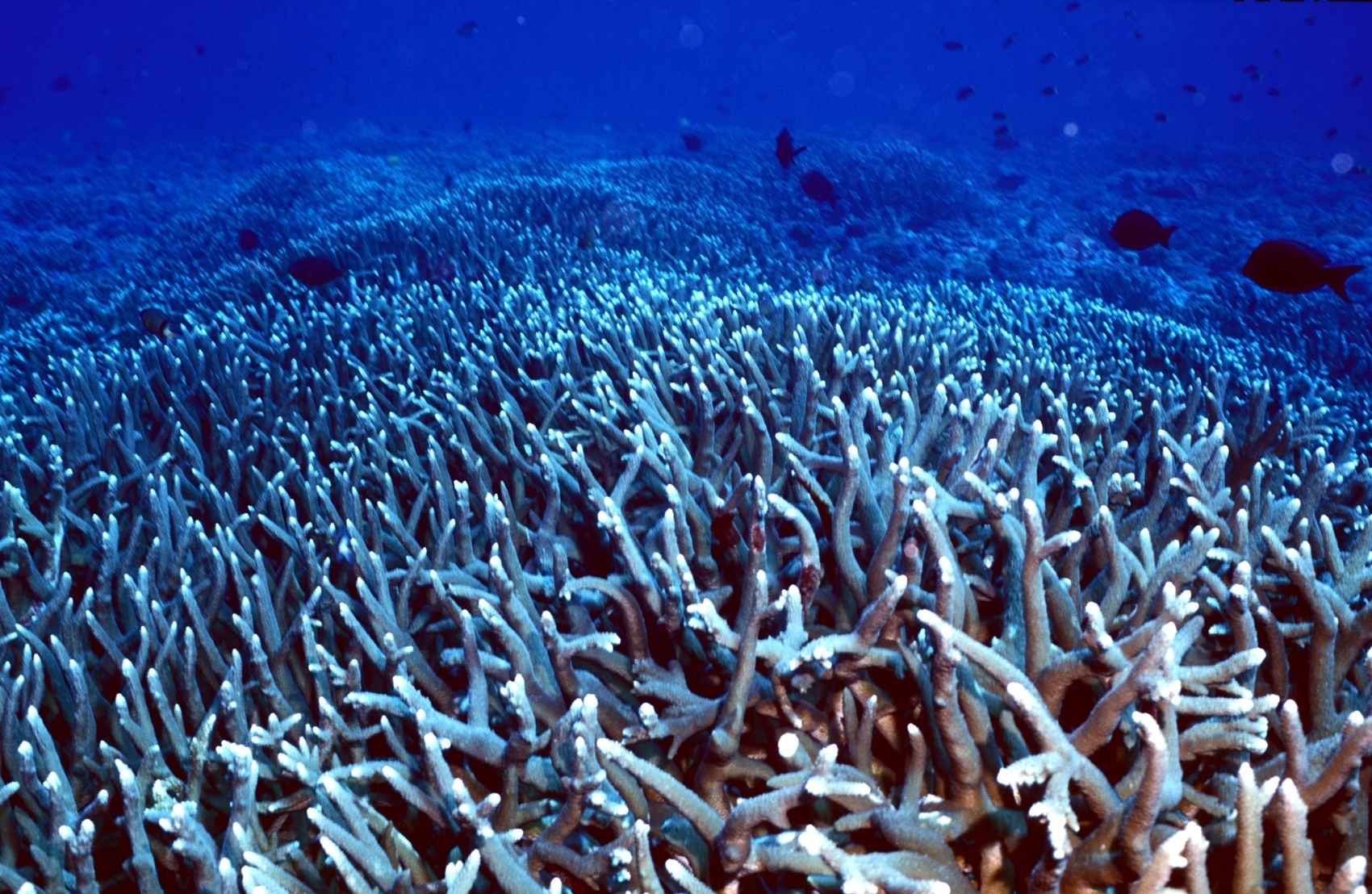
Monospecific stands of dominant corals can develop before secondary succession clears space for other species. Photo by Jim E Maragos, U.S. Fish and Wildlife Service.
Sure, some details in this scenario still apply today. Too many salespeople and/or their customers certainly still play by those rules. Even that grossly oversimplified inches/gallon formula persists. But, it can indeed be said that the standard process of establishing a healthy reef aquarium system has improved significantly over the years. A lot of this owes to a growing recognition among aquarists that coral reefs are necessarily nutrient-poor environments; much more of this owes, arguably, to a shift in the view of the reef aquarium as a system of technological components towards one of an intricately structured biological system. Here, the flow of nutrients is regulated mainly by ecological interactions as opposed to equipment and massive water exchange. According to this line of thought, an excessive reliance on technology addresses the symptoms of imbalanced nutrient cycles, but not their underlying causes.
So, is the following discussion just going to be a long reminder to not add too many fish and to perform water changes as needed? Emphatically, no. Most of us already have an intuitive understanding of such things (to whatever extent we put it into practice). What we propose is that the inhabitants of our aquaria are seen more as a community than as a collection-that our systems are built for them, rather than around them. We further suggest that such an approach is likely to produce a markedly higher potential diversity of organisms even while being more stable, healthy and manageable. While they certainly do not yet appear to be the prevailing modus operandi, holistic and naturalistic reefkeeping methodologies are hardly new (think Lee Chin Eng). Here, we elaborate upon some familiar guidelines for developing (as opposed to merely stocking) a reef aquarium while focusing on two terms that might be unfamiliar to the average hobbyist, namely biological succession and trophic structure.
This piece discusses the concept of biological succession. A following piece will describe trophic structure. A third, concluding piece will provide a general outline for the tactical stocking of reef aquaria.
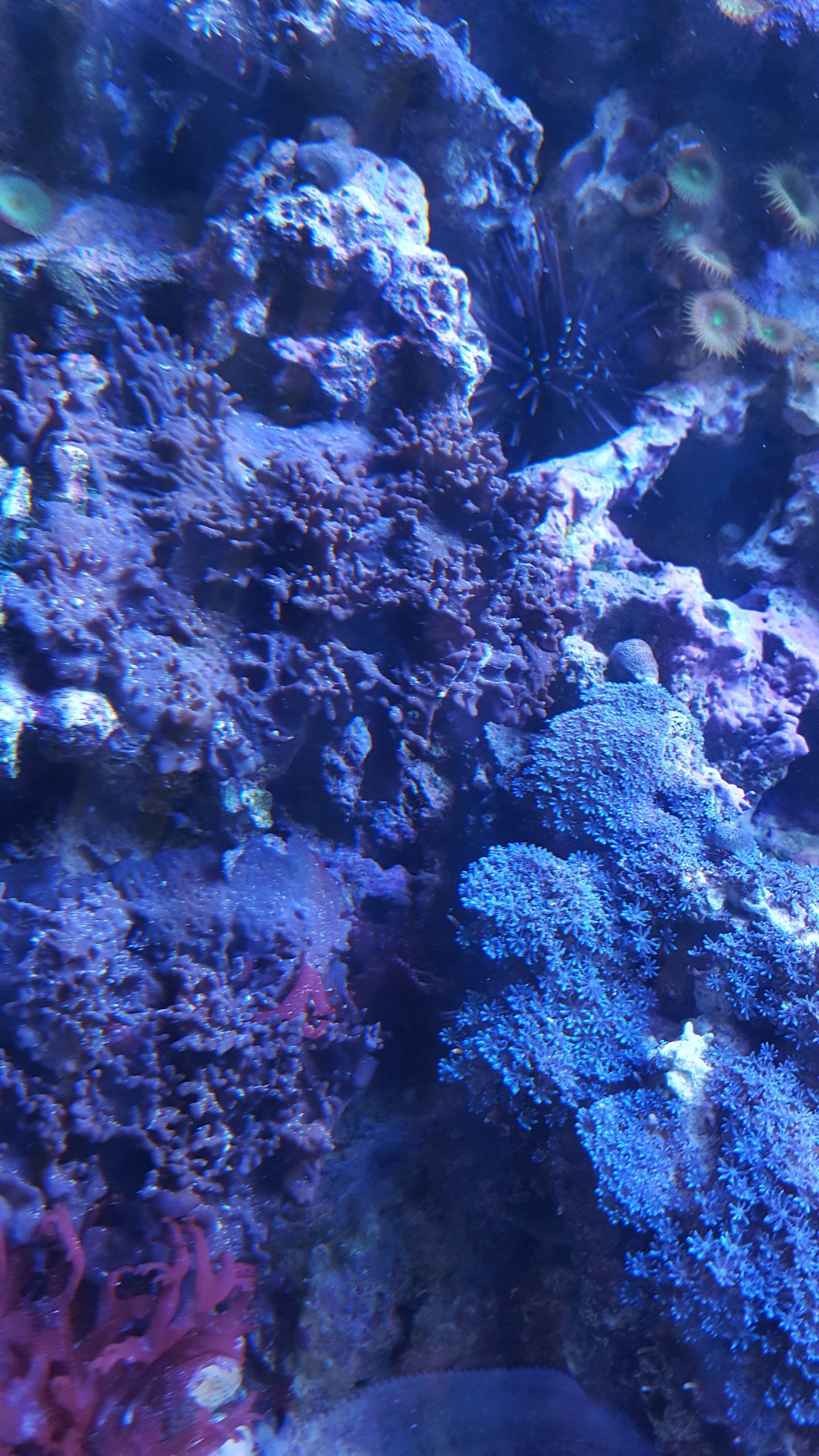
Due to careless handling and conditioning, filter feeders such as tunicates and barnacles on live rock usually go “extinct,” only to be superseded by creatures such as mushroom anemones and zoanthids. Photo by Kenneth Wingerter.
Everything in its place
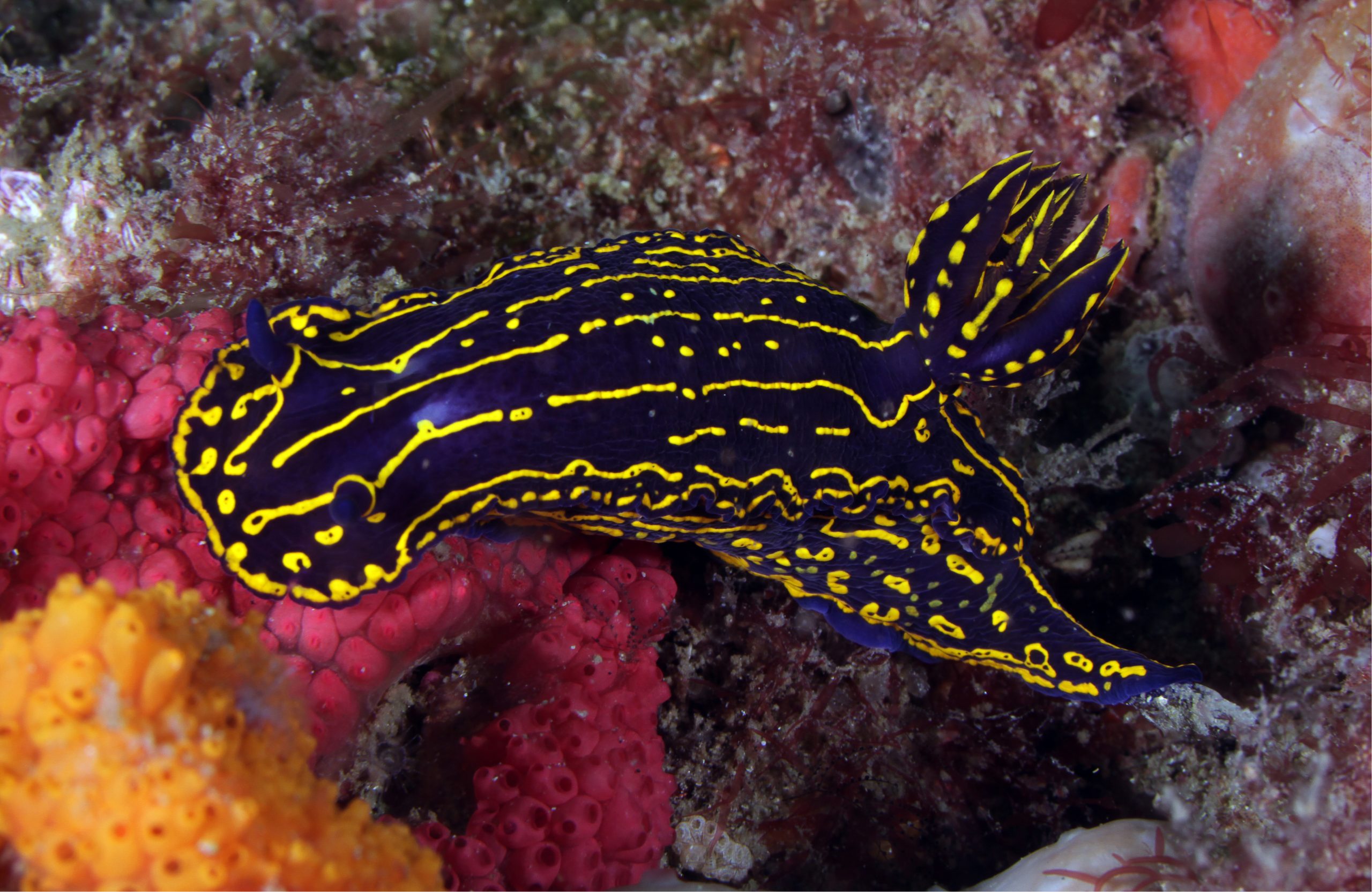
Highly specialized organisms, such as the regal sea goddess nudibranch, generally appear only in the late stages of ecological succession. Photo by Greg McFall
Until a few decades ago, most ecologists adhered to a view that biological communities were for the most part quite stable, even when subjected to cataclysmic events. The idea was that there was a powerful, mysterious “natural balance” at work that held things together. Observations of real, natural ecosystems have suggested otherwise. At all scales, change appeared to be more common than stability. Thus, the modern nonequilibrium model of biological communities was put forth. Coral reefs are deemed to be excellent examples of nonequilibrium communities.
By essentially destroying whole patches of biological communities, ecological disturbance opens up fresh habitable space. Disturbance not only alters the availability of resources but might also completely remove organisms. On coral reefs, violent cyclones have been demonstrated to be capable of decimating coral cover (and just about all reef-associated plants and animals) from exposed areas. These events initiate an orderly sequence of species dominance. The frequency at which these events occur serves to regulate the long-term characteristics of species composition there (for more information about ecological disturbance and how it effects biological communities, see Disturbance-Facilitated Coexistence of Sessile Organisms in Space-Limited Environments: A Review of Works in Ecological Disturbance Theory).
We may suppose that disturbance can reduce biodiversity on the reef; to some extent, that assumption would be correct. However, these events (particularly if the exposed areas are in patches) can actually increase diversity at larger spatial scales. The reason for this is that the pristine, unoccupied spaces left behind are quite different than those around them. This presents opportunities for recruitment by certain species that would have been outcompeted by the previous residents. In other words, greater habitat diversity=greater biodiversity.
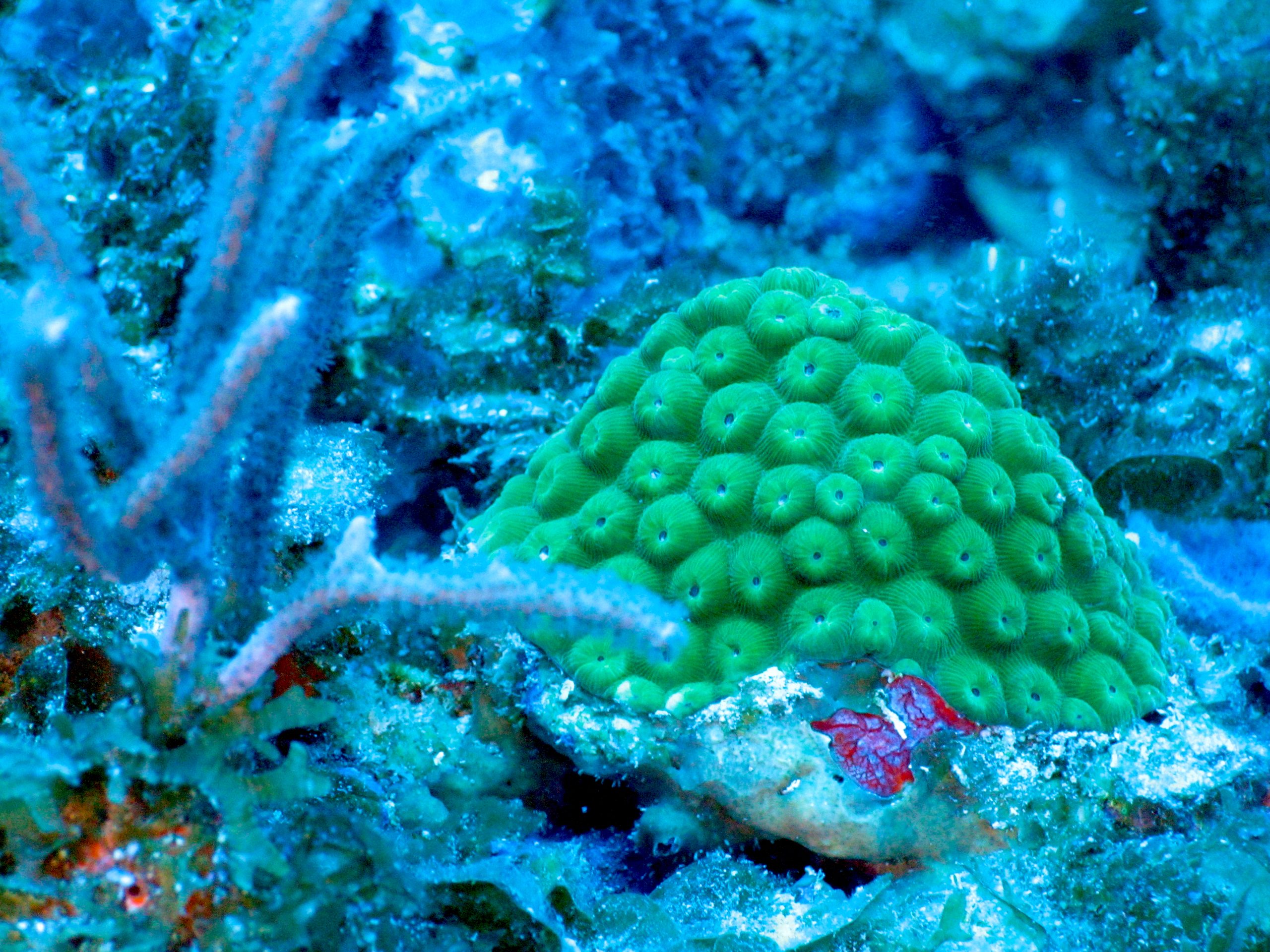
A coral reef is an extremely crowded, and cruel, environment. Photo by NOAA’s National Ocean Service.
Disturbance sets the stage for biological succession. The rapid invasion and colonization of a newly cleared habitat, referred to as primary succession, is the first phase of the process. It is at this time that a dominant species (i.e. one having the greatest abundance or biomass in a given area) may emerge. Here, domination occurs not just because a given species is a good invader or formidable competitor, but additionally because top predators/herbivores are typically ousted from severely disturbed locales.
Of course, merely planting a flag on a barren, unoccupied territory does not guarantee a permanent home for any population of organisms. These resourceful early-arrivers may enjoy their dominance for a while, but… habits change. Sometimes these changes are brought about by the very presence of the primary colonizers themselves. This actually paves the way (especially if it somehow benefits the primary colonizer) for later-arriving colonizers. In this case, referred to as facilitation, pioneer species make the habitat more suitable for intermediate species. Though it is a more or less cooperative interaction, the newer species can eventually displace the facilitator. In other cases, referred to as inhibition, early-arrivers can impede the establishment of other species. Only in rare cases do early-arrivers simply tolerate the arrival of other species; space is just too precious a resource on a reef to share nicely.
Minor disturbances occur from time to time. For example, moderate storm surges can unsettle sediments, damage (but not obliterate) stony coral colonies, and so on. Any subsequent modification that takes place in a damaged, but mostly intact, biological community is referred to as secondary succession.
As an area is colonized by more and yet more species, and is bit-by-bit bioengineered by them, a relatively stable climax community might develop. In this state, a community enjoys a relatively high level of stability for a relatively long period of time. Still, extensive succession is not inevitable, nor is any rate of change fixed. Disturbance events are for the most part random, and so could wipe out a developing community well before it ever reaches its climax.
The natural world as we know it is the product of innumerable cycles of disturbance and succession. It is in a present state of flux, and will never stop changing; change is the norm. This is undoubtedly so with our marine aquaria, especially during the earlier stages of development. As we will see in the follow-ups to this piece, while artificial reefs strikingly differ from their wild counterparts in many respects, we absolutely can take steps to ensure that our systems reach their climax-in all their diversity and complexity and stability-in the shortest amount of time and with the least amount of headache.
References
- Levinton, Jeffrey. Marine Biology: Function, Biodiversity, Ecology. 2nd ed. New York, NY: Oxford University Press, 1995.
- Campbell Neil A. and Jane B. Reece. Biology. 6th ed. San Francisco, CA: Benjamin Cummings, 2002.


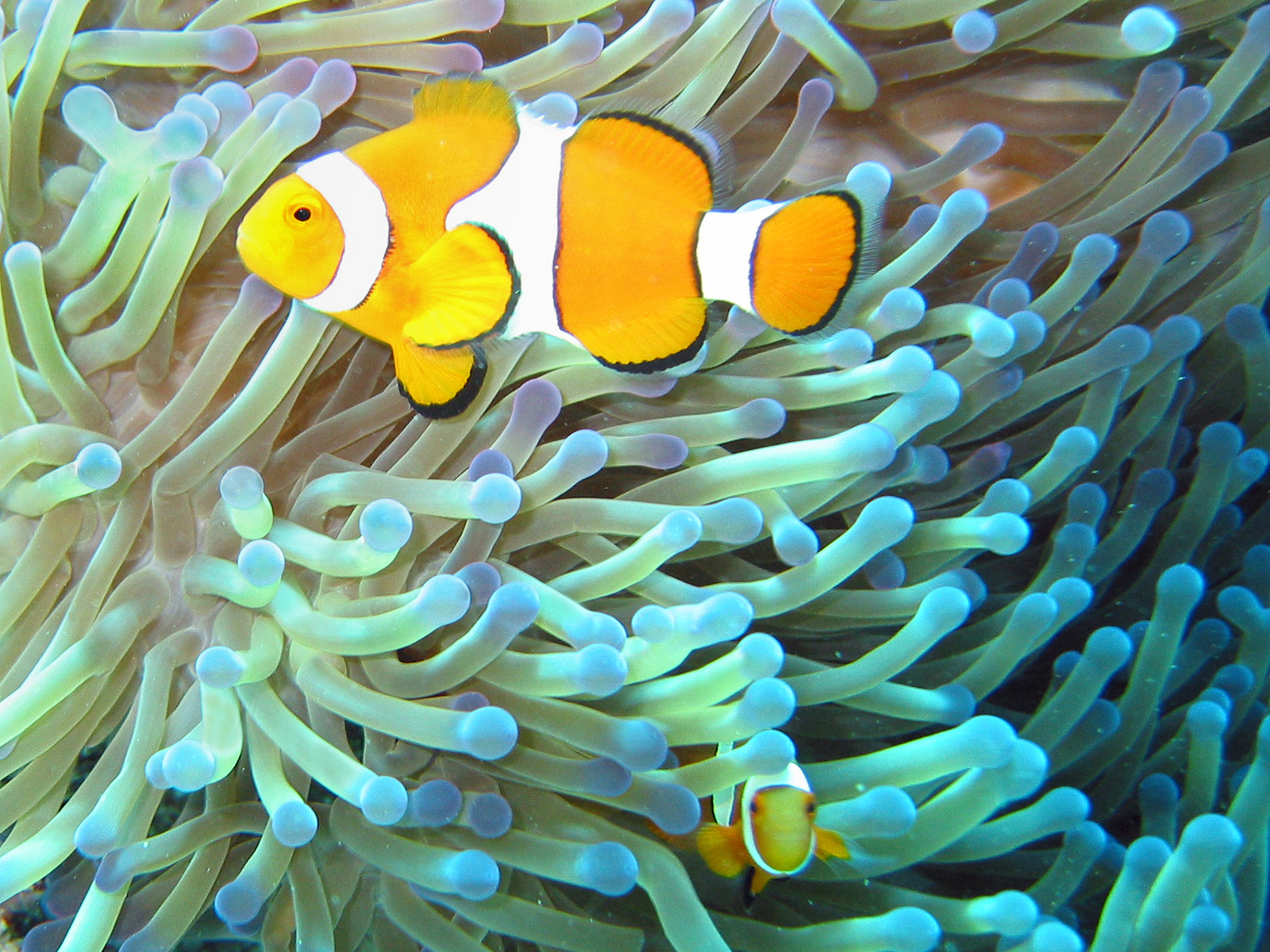
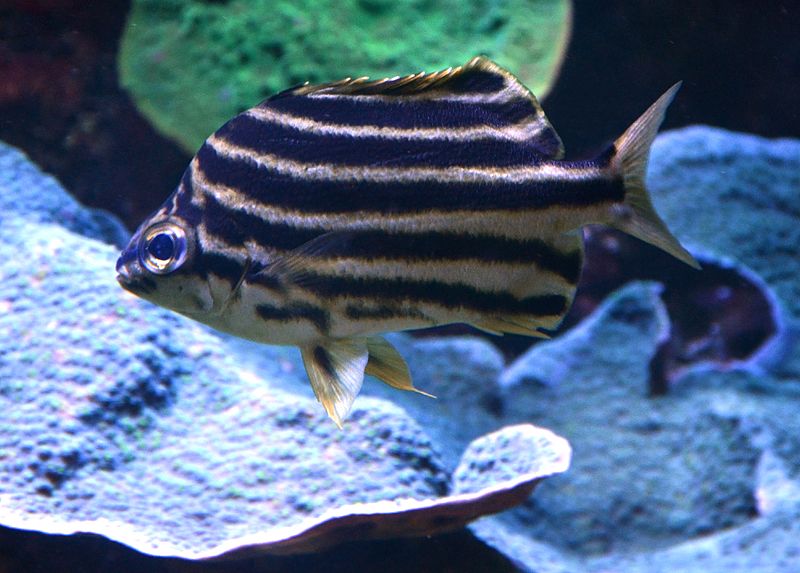

0 Comments